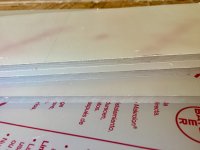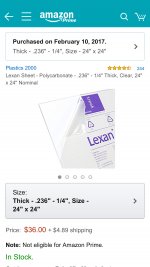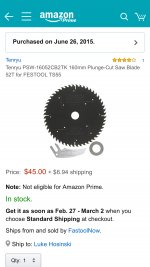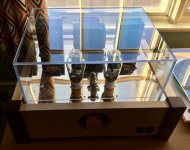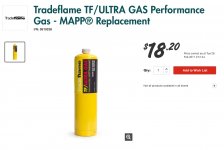iamnothim
Member
- Joined
- Feb 5, 2014
- Messages
- 1,436
My daughter's cats are crawling on and sleeping on my homemade tube amp. I have a pair of 1959 Amprex Bugle Boy tubes hat I am real partial to. Fur against glass can produce a very destructive static charge. Since I can't kill em' I am building a "simple" cover from 1/4" Lexan polycarbonate sheet.
I watched a couple YouTube videos and it looked straight forward. Jigsaw, tables, bandsaw, and smooth with a flush cut router bit. Still I had some trepidation about this. I could see the sheet cracking up. Since I don't have a very fine bandsaw blade I decided to use my TS55 REQ. I have a Tenryu 52T thin kerf blade.
I dialed the 55 down to a speed of "1". Guess what? Worked like a champ. Very clean cuts. This material is a lot more pliable than I expected. Tomorrow I fire up the OF1500
[attachimg=1]
[attachimg=2]
[attachimg=3]
[attachimg=4]
I watched a couple YouTube videos and it looked straight forward. Jigsaw, tables, bandsaw, and smooth with a flush cut router bit. Still I had some trepidation about this. I could see the sheet cracking up. Since I don't have a very fine bandsaw blade I decided to use my TS55 REQ. I have a Tenryu 52T thin kerf blade.
I dialed the 55 down to a speed of "1". Guess what? Worked like a champ. Very clean cuts. This material is a lot more pliable than I expected. Tomorrow I fire up the OF1500
[attachimg=1]
[attachimg=2]
[attachimg=3]
[attachimg=4]


